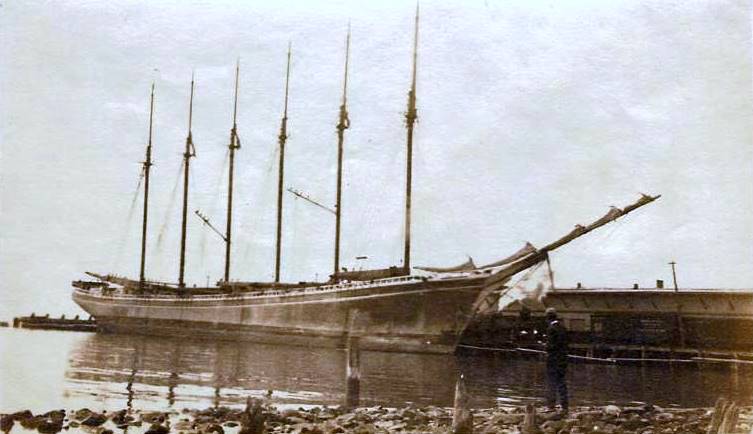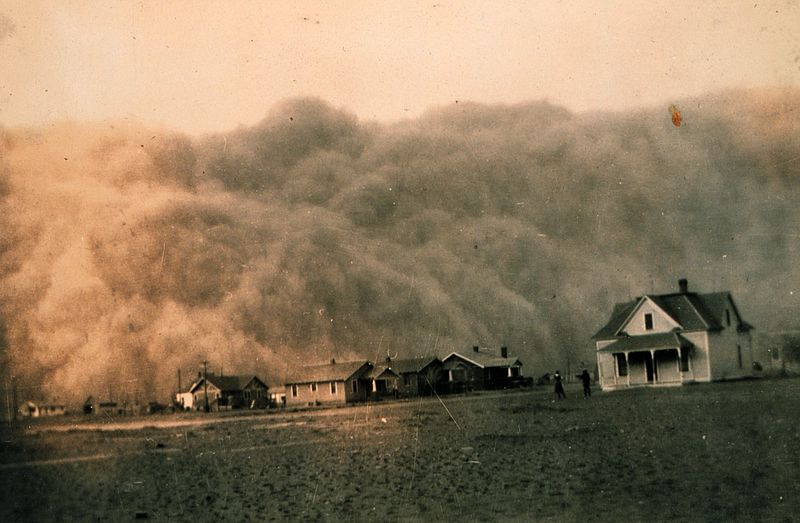The size and nature of the waves during the deluge dictates the strength of the ark.
Continue reading...
Continue reading...
Strengthening families through biblical principles.
Focus on the Family addresses the use of biblical principles in parenting and marriage to strengthen the family.
Read daily articles from Focus on the Family in the Marriage and Parenting Resources forum.
Here's a bigger problem...The problem is not the strength of the box, but the flexing of very large wooden ships. There's an effective limit to how big a wooden vessel can be:
Wyoming was an American wooden six-masted schooner built and completed in 1909 by the firm of Percy & Small in Bath, Maine.[1] With a length of 450 ft (140 m) from jib-boom tip to spanker boom tip, Wyoming was the largest known wooden ship ever built.[4]
Because of its extreme length and wood construction, Wyoming tended to flex in heavy seas, which would cause the long planks to twist and buckle, thereby allowing sea water to intrude into the hold. Wyoming had to use pumps to keep its hold relatively free of water. In March 1924, it foundered in heavy seas and sank with the loss of all hands.

Wyoming (schooner) - Wikipedia
en.wikipedia.org
This is one of the main reasons that no one will ever build an Ark and put it to sea to test it.
Hadn't thought about that one. Nice catch.Here's a bigger problem...
Ice floats
The polar ice didn't foat away
A ship with no propulsion can't turn into the wind.The problem is not the strength of the box, but the flexing of very large wooden ships. There's an effective limit to how big a wooden vessel can be:
Wyoming was an American wooden six-masted schooner built and completed in 1909 by the firm of Percy & Small in Bath, Maine.[1] With a length of 450 ft (140 m) from jib-boom tip to spanker boom tip, Wyoming was the largest known wooden ship ever built.[4]
Because of its extreme length and wood construction, Wyoming tended to flex in heavy seas, which would cause the long planks to twist and buckle, thereby allowing sea water to intrude into the hold. Wyoming had to use pumps to keep its hold relatively free of water. In March 1924, it foundered in heavy seas and sank with the loss of all hands.

Wyoming (schooner) - Wikipedia
en.wikipedia.org
This is one of the main reasons that no one will ever build an Ark and put it to sea to test it.
The problem is not the strength of the box, but the flexing of very large wooden ships. There's an effective limit to how big a wooden vessel can be:
Wyoming was an American wooden six-masted schooner built and completed in 1909 by the firm of Percy & Small in Bath, Maine.[1] With a length of 450 ft (140 m) from jib-boom tip to spanker boom tip, Wyoming was the largest known wooden ship ever built.[4]
Because of its extreme length and wood construction, Wyoming tended to flex in heavy seas, which would cause the long planks to twist and buckle, thereby allowing sea water to intrude into the hold. Wyoming had to use pumps to keep its hold relatively free of water. In March 1924, it foundered in heavy seas and sank with the loss of all hands.

Wyoming (schooner) - Wikipedia
en.wikipedia.org
The problem is not the strength of the box, but the flexing of very large wooden ships. There's an effective limit to how big a wooden vessel can be:
Wyoming was an American wooden six-masted schooner built and completed in 1909 by the firm of Percy & Small in Bath, Maine.[1] With a length of 450 ft (140 m) from jib-boom tip to spanker boom tip, Wyoming was the largest known wooden ship ever built.[4]
Because of its extreme length and wood construction, Wyoming tended to flex in heavy seas, which would cause the long planks to twist and buckle, thereby allowing sea water to intrude into the hold. Wyoming had to use pumps to keep its hold relatively free of water. In March 1924, it foundered in heavy seas and sank with the loss of all hands.

Wyoming (schooner) - Wikipedia
en.wikipedia.org
This is one of the main reasons that no one will ever build an Ark and put it to sea to test it.
Was there polar ice, if there was how did it survive the action of the flood?Here's a bigger problem...
Ice floats
The polar ice didn't foat away
The polar ice has been there for hundreds ofWas there polar ice, if there was how did it survive the action of the flood?
Is there a risk from drifting ice for a drifting vessel?
Jumping to your comment about the Ark capsizing?
2 points.
The assessment by naval ship architects showed that even broadside on to the waves the righting movem3nt of the Ark would prevent it capsizing.
And aig have made an assumption that the Ark would not have been a rectangular box but built with projections to catch the wind and induce drag so it would turn into the wind and not risk being rolled over by large waves.
There is no evidence for these, just a reasonable assumption that God would know that something like this would ensure the Ark survived.
No, this is false. The stress comes from wave action on the hull.Please read the articles in Answers in genesis about the Ark.
This issue has been raised before and answered.
A sailing ship is stressed by the forces working on the masts, causing as you point out movement in the Hull.
You are right of course that God could designWas there polar ice, if there was how did it survive the action of the flood?
Is there a risk from drifting ice for a drifting vessel?
Jumping to your comment about the Ark capsizing?
2 points.
The assessment by naval ship architects showed that even broadside on to the waves the righting movem3nt of the Ark would prevent it capsizing.
And aig have made an assumption that the Ark would not have been a rectangular box but built with projections to catch the wind and induce drag so it would turn into the wind and not risk being rolled over by large waves.
There is no evidence for these, just a reasonable assumption that God would know that something like this would ensure the Ark survived.
No need for "design"; He could merely have a miraculous suspension of nature around the Ark and save it from any calamity. But if one gets to call in non-scriptural miracles to cover gaps in one's story, then all stories are equally plausible.You are right of course that God could design
anything he likes, and make it work.
There's a more practical reason, isn't there? I mean, if AIG could pull that off, that would shut up all the critics of his interpretation, wouldn't it?The fact God promised to never send another Global Flood (He's keeping it) is one of the main reasons that no one will ever build an Ark and put it to sea to test it.
Perhaps the AiG people failed to consultNo, this is false. The stress comes from wave action on the hull.
Hogging is the stress a ship's hull or keel experiences that causes the center or the keel to bend upward. Sagging is the stress a ship's hull or keel is placed under when a wave is the same length as the ship and the ship is in the trough of two waves. This causes the middle of the ship to bend down slightly, and depending on the level of bend, may cause the hull to snap or crack.
Hogging and sagging - Wikipedia
en.wikipedia.org
Very large wooden vessels have flexed so much that massive leaking resulted.
I've seen the term " magic* realism" used to refer to a literary style that blends the mundane and theNo need for "design"; He could merely have a miraculous suspension of nature around the Ark and save it from any calamity. But if one gets to call in non-scriptural miracles to cover gaps in one's story, then all stories are equally plausible.
If you can demonstrate that millions of years are real and not just blind assumptions, that should cause the YEC position to not exist, wouldn't it?There's a more practical reason, isn't there? I mean, if AIG could pull that off, that would shut up all the critics of his interpretation, wouldn't it?
Any project to observe "millions of years" would fail. I think we know why. No one can back their "this object is millions of years old" with a demonstration.But for the reasons we're discussing, That project would fail. And Ken Ham knows it. So he's not going to back his talk up with a demonstration.
Why yes there are many in denial of facts.If you can demonstrate that millions of years are real and not just blind assumptions, that should cause the YEC position to not exist, wouldn't it?
As Earth continues existing, there will always be those in opposition to Facts, especially if they come from the Bible. Like the Noahs (gloal ;) )Flood truth.
Any project to observe "millions of years" would fail. I think we know why. No one can back their "this object is millions of years old" with a demonstration.
meanwhile, Noah's Ark demonstration is in the Bible. You dont have such an advantage because you like to think its "allegory".
Chinese language has "6 person boat". Mabye noah's ark is real? Oh well, i guess language itself must be allegory too! Anything for Darwinism. Lol
The Flood account is the original, and fakes and ripoffs came after that.I've seen the term " magic* realism" used to refer to a literary style that blends the mundane and the
supernatural in a way very like the flood story.
Just looked your thing up -There's even those who say you cannot determine a trees age by counting rings.

what do you mean by design and why do you put it in quotes?No need for "design";